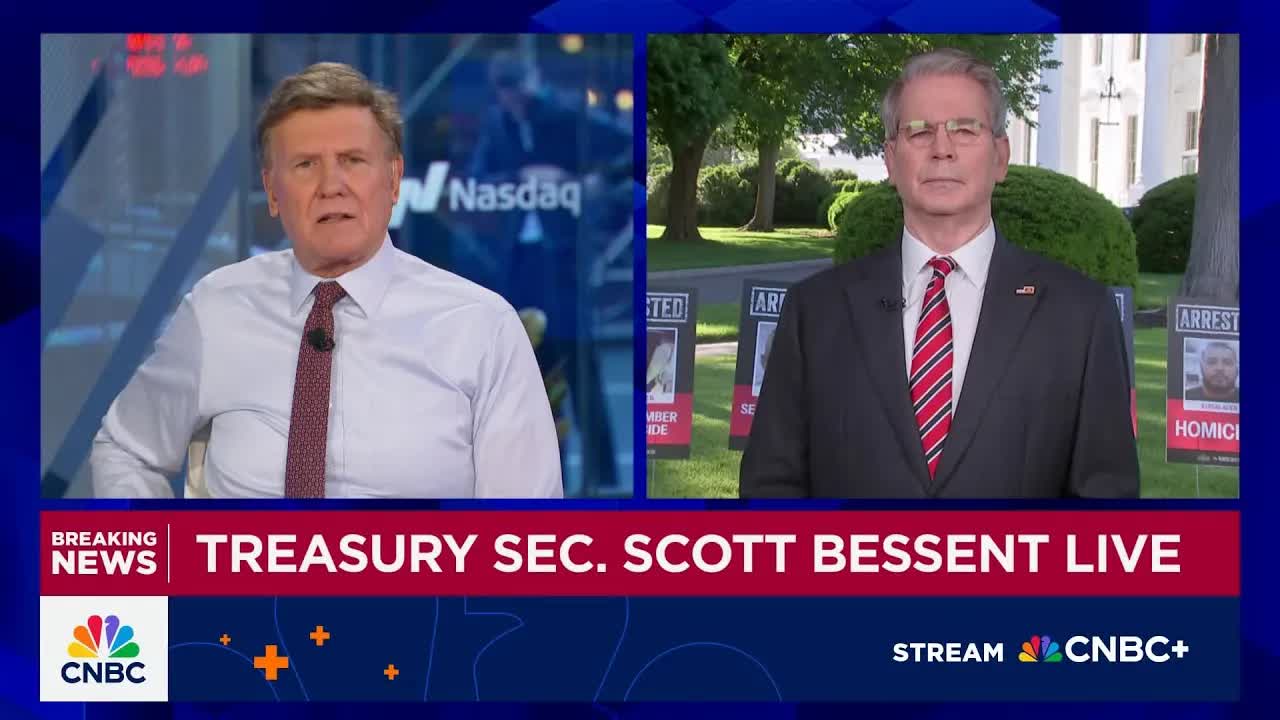Bessent’s De-Escalation Gambit: Can the U.S.-China Tariff Standoff Unwind?
The U.S.-China trade war reached an inflection point in early 2025 when Treasury Secretary Scott Bessent declared the tariff standoff “unsustainable,” sparking a 1,000-point surge in the Dow Jones Industrial Average. Bessent’s public pivot toward de-escalation marks a critical shift in the Trump administration’s strategy, blending bullish rhetoric with pragmatic diplomacy. But as markets cheer and critics warn of recession risks, the path forward remains fraught with economic and geopolitical pitfalls.

The Case for De-Escalation
Bessent’s optimism hinges on two pillars: U.S. leverage and the promise of negotiated deals. First, he argues the asymmetry in trade flows tilts in America’s favor. China’s $300 billion annual trade surplus with the U.S. means its retaliatory tariffs—now at 125% on U.S. goods—are economically self-defeating. “They’re playing with a pair of twos,” Bessent told Fox Business, dismissing Beijing’s tariff hikes as a “losing hand.”
Second, he frames tariffs as a temporary negotiating tool. By imposing punitive duties on Chinese imports (peaking at 145%), the U.S. aims to force Beijing to the table. Bessent envisions a “melt like an ice cube” scenario: as U.S. manufacturing reshores, tariff revenue will shrink, replaced by payroll taxes from new industries. “The ultimate goal is to bring jobs back,” he stated, “but in the meantime, we’ll collect substantial tariffs.”
Market Reactions: A Fragile Rally
Bessent’s January 2025 remarks sent the Dow to 39,200—a 2.5% jump—while gold plunged 1.2% below $3,400. The U.S. dollar index rose 0.4%, reflecting renewed confidence in the administration’s strategy. Yet beneath the surface, cracks persist.
The S&P 500, however, dipped 0.5% in late January, nearing bear market territory, as investors weighed recession risks. JPMorgan CEO Jamie Dimon warned that tariff-driven inflation and credit strains “will lead to a recession,” a view underscored by a 10-year Treasury yield spiking to 4.8%—its highest since February 2023.
The Negotiation Gauntlet
Bessent’s de-escalation plan hinges on rapid, coordinated diplomacy. Over 70 countries have initiated talks with the U.S., including Japan, which he describes as “at the forefront” of efforts to dismantle non-tariff barriers like Europe’s VAT and China’s currency controls. His goal is to finalize “bespoke” bilateral deals by mid-2025, creating a unified bloc to pressure China.
Yet challenges loom large. Analysts doubt the feasibility of negotiating 70+ deals within 90 days, particularly on complex issues like agricultural standards or digital trade rules. Former Treasury official William Reinsch notes, “Structural reforms don’t happen overnight,” warning of potential delays.
China’s Resolve and the Geopolitical Tightrope
Beijing has responded defiantly. China’s Commerce Ministry has rejected U.S. demands for unilateral concessions, vowing to retaliate against any agreements that undermine its interests. President Xi Jinping’s April 2025 remarks in Vietnam framed the trade war as a “winner-less” conflict, urging global free trade.
Bessent, however, remains undeterred. He insists that coordinated pressure from U.S. allies—such as Japan and South Korea—can force Beijing to negotiate. “Approach China as a group,” he advised partner nations, “and we’ll have leverage.”
The Bottom Line: Risks vs. Rewards
Investors face a paradox. Bessent’s de-escalation narrative has boosted markets, but the administration’s tariff policies risk prolonged economic pain. Key data points underscore the tension:
- Market Volatility: U.S. bond yields rose 20 basis points in January–February 2025, reflecting inflation fears.
- Trade Deficit: The $300 billion U.S.-China deficit remains unresolved, with no clear mechanism to shrink it.
- Geopolitical Risk: China’s 125% tariffs threaten global supply chains, while the U.S. dollar’s strength complicates emerging market debt.
Conclusion: A Fragile Equilibrium
Bessent’s gamble—using tariffs as a lever for negotiated deals—holds potential but carries immense risk. If the administration can secure bilateral agreements swiftly and avoid recession, markets may sustain their rally. However, delays or a worsening trade environment could amplify the “unsustainable” dynamics he seeks to resolve.
Investors should monitor two critical metrics:
1. Negotiation Progress: Track the number of finalized deals (e.g., Japan, Taiwan) and their scope.
2. Economic Indicators: Watch the U.S. manufacturing PMI and Treasury yields for signs of recession.
In the end, Bessent’s success hinges not just on his rhetoric but on execution. With markets already pricing in optimism, any misstep could trigger a sharp correction—a reminder that trade wars, like markets, are rarely won with bluster alone.


_442a2dcc1749832873286.jpeg)
_e68fac6d1749831664430.jpeg)


_cbf77e8c1748017079428.jpeg)



